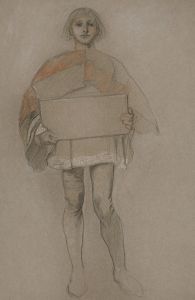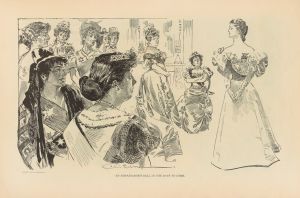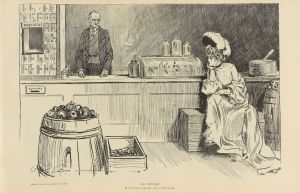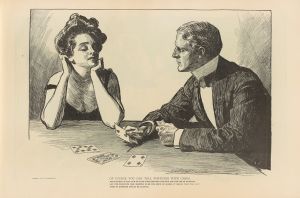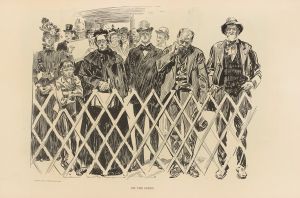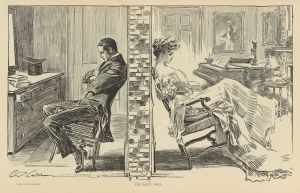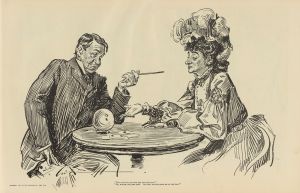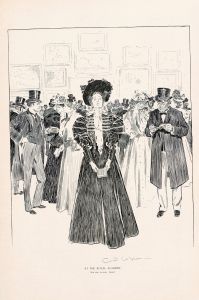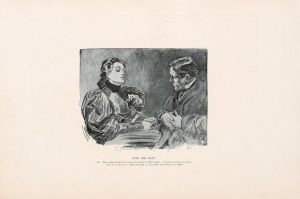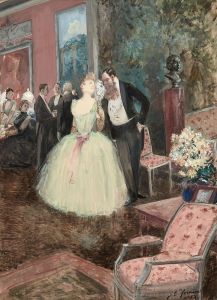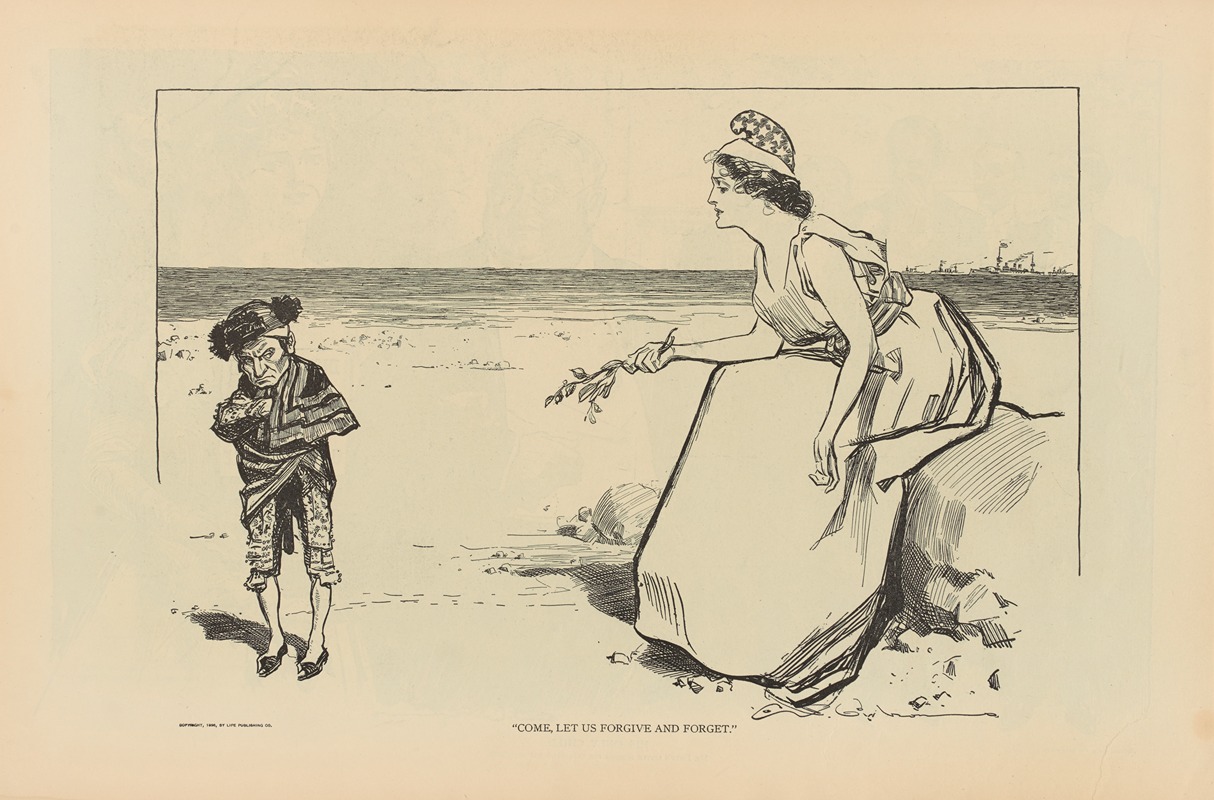
Come, let us forgive and forget
A hand-painted replica of Charles Dana Gibson’s masterpiece Come, let us forgive and forget, meticulously crafted by professional artists to capture the true essence of the original. Each piece is created with museum-quality canvas and rare mineral pigments, carefully painted by experienced artists with delicate brushstrokes and rich, layered colors to perfectly recreate the texture of the original artwork. Unlike machine-printed reproductions, this hand-painted version brings the painting to life, infused with the artist’s emotions and skill in every stroke. Whether for personal collection or home decoration, it instantly elevates the artistic atmosphere of any space.
"Come, let us forgive and forget" is an illustration created by the American artist Charles Dana Gibson. Gibson, born on September 14, 1867, in Roxbury, Massachusetts, was a prominent illustrator during the late 19th and early 20th centuries. He is best known for his creation of the "Gibson Girl," an iconic representation of the American woman that became a cultural phenomenon.
The illustration "Come, let us forgive and forget" is part of Gibson's extensive body of work that often depicted social scenes and interactions with a keen eye for detail and a subtle sense of humor. This particular piece showcases Gibson's talent for capturing human emotions and relationships through his distinctive pen-and-ink technique.
In "Come, let us forgive and forget," Gibson portrays a poignant moment of reconciliation between a man and a woman. The scene is set in a domestic environment, with the couple seated closely together, suggesting an intimate and personal conversation. The man's expression is earnest, and he appears to be speaking to the woman, who listens attentively with a thoughtful look on her face. The title of the illustration implies a theme of forgiveness and moving past grievances, a common subject in Gibson's work that often explored the complexities of social and romantic relationships.
Gibson's illustrations were widely published in popular magazines of the time, such as Life, Harper's Weekly, and Scribner's, making his work highly accessible to the public. His ability to capture the essence of contemporary American life and the subtleties of human interaction contributed to his popularity and lasting influence in the field of illustration.
The "Gibson Girl" series, which includes "Come, let us forgive and forget," played a significant role in shaping the image of the modern American woman at the turn of the century. The Gibson Girl was characterized by her beauty, independence, and confidence, reflecting the changing roles and aspirations of women during this period. Although "Come, let us forgive and forget" is not explicitly part of the Gibson Girl series, it shares the same stylistic elements and thematic concerns that define Gibson's work.
Charles Dana Gibson's legacy as an illustrator is marked by his ability to blend artistic skill with social commentary. His illustrations not only entertained but also provided insight into the cultural and social dynamics of his time. "Come, let us forgive and forget" is a testament to Gibson's talent for capturing the human experience with empathy and precision.
Gibson continued to work as an illustrator until his death on December 23, 1944. His contributions to the field of illustration remain influential, and his works are still celebrated for their artistic merit and cultural significance. "Come, let us forgive and forget" remains a notable example of Gibson's ability to convey complex emotions and narratives through his art.





